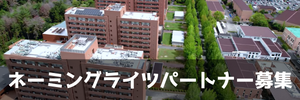(English announcement can be found in the latter half of this notice.)
広島大学バイオマスプロジェクト研究センターと中国地域バイオマス利用研究会の共催で広島大学バイオマスイブニングセミナーを開催しています。バイオマスに関する基本的な考え方から最先端の情報までをカバーして、この地域におけるバイオマスの活動に資することを目的とするものです。第72回を以下の日程で開催しますので、ご参集下さい。
日時
2019年2月7日(木)16:20~17:50
会場
広島大学東広島キャンパス工学部110講義室
広島大学 東広島キャンパス
https://www.hiroshima-u.ac.jp/en/access/higashihiroshimacampus
工学部 建物配置図
www.hiroshima-u.ac.jp/eng/access/building
工学部 講義室配置図
www.hiroshima-u.ac.jp/eng/access/lectureroom
プログラム
講演:広島大学大学院工学研究科 D3 Apip Amrullah
「下水汚泥の亜臨界および超臨界水ガス化におけるリンの挙動」
下水汚泥は最終製品の1つであり、これもまたリン(P)のキャリアであり、廃水処理システムにおけるP回収のための重要な資源を表しています。 本研究では、連続式反応器を用いて、下水汚泥の亜臨界および超臨界水ガス化におけるリンの挙動を調べました。 連続式反応器を使用し、そして実験を種々の温度(300、350、500、および550℃)、滞留時間(5〜30秒)、および25MPaの一定圧力で実施しました。 反応後の液体試料中のリンを定量分析しました。 結果は、有機リン(OP)が超臨界水条件とより短い滞留時間(10秒)の下で無機リン(IP)にほぼ完全に変換されることを示しました。
講演:広島大学大学院工学研究科 教授 松村 幸彦
「水熱粉砕が組成変化に与える影響」
粉砕前処理、水熱前処理は安価で環境に良いバイオエタノール生産の前処理方法として知られています。また、これらの処理を同時に行うことで効果的に前処理を進めることができることが報告されています。しかし,この同時水熱粉砕前処理後に発生する液相に溶解している成分が何由来のものかについて調査した報告はまだありません。そのため、今回の研究の目的を同時水熱粉砕前処理による原料の組成変化に粉砕が与える影響の確認とし、ディスクミルのディスク間距離を0.5 mm、1.5 mmとかえて前処理を行った際に得られた固体試料の実験前と実験後の組成を調べました。その結果、0.5 mm, 1.5 mmどちらの条件でもリグニン、ヘミセルロースが減少しており、液相溶解成分はリグニン由来のものが多いことが示唆されました。また、粉砕の程度が組成に与える影響はほとんど確認されなかったことから、この前処理中では,水熱溶解が主に進んでいる可能性があることがわかりました。
【講習会】 ≪生物化学的変換≫
講演:広島大学大学院先端物質科学研究科 教授 中島田 豊
エネルギー資源の枯渇が問題視されているなか、太陽エネルギーを使って生物が作り出すバイオマス資源は、再生可能エネルギーとして風力・太陽光などの自然エネルギーとともに注目されています。バイオマスの有効利用には、適切な変換を行って2次エネルギーにする必要があります。バイオマスエネルギーの変換には、1)物理的変換、2)熱化学的変換、3)生物化学的変換の3種類があります。今回のイブニングセミナーでは、バイオマスの生物化学的変換について紹介します。
司会・解説:広島大学大学院工学研究科 教授 松村 幸彦
なお、18:00より意見交換会(参加費 800円)を開催します。ご都合の付く方はこちらにもご参加下さい。
The 72nd Hiroshima University Biomass Evening Seminar
(The 48th Hiroshima University ACE Seminar)
Biomass Project Research Center, Hiroshima University, and HOSTY Association are co-organizing the Hiroshima University Biomass Evening Seminar. This seminar covers topics from the fundamentals of biomass to the latest information so that it can contribute the activities on biomass in this district. The 72nd seminar will be held as follows. Please join.
Date & Time
Thu.7 Feb., 2019 16:20-17:50
Place
Engineering 110 Lecture Room, Higashi-Hiroshima Campus, Hiroshima University
Higashi Hiroshima Campus, Hiroshima University
https://www.hiroshima-u.ac.jp/en/access/higashihiroshimacampus
School of Engineering Buildiing map
https://www.hiroshima-u.ac.jp/en/access/higashihiroshimacampus/aca_7
School of Engineering Lecture room map
www.hiroshima-u.ac.jp/eng/access/lectureroom
Program
Lecture: Apip Amrullah
D3 Graduate School of Engineering, Hiroshima University
“Behavior of Phosphorus during Sub ̶ and Supercritical Water Gasification of Sewage Sludge”
Sewage sludge is one of the end-products, which also is a carrier of phosphorus (P) and represents an important resource for P recovery in wastewater treatment system. In this study, the behavior of phosphorus during sub ̶ and supercritical water gasification of sewage sludge was investigated using continuous reactor. A continuous reactor was employed, and experiments were conducted at various temperatures (300, 350, 500, and 550 °C), residence times (5 ̶ 30 s), and a fixed pressure of 25 MPa. The phosphorus in the liquid sample after the reaction was quantitively analyzed. The results showed that organic phosphorus (OP) was almost completely converted into inorganic phosphorus (IP) under supercritical water condition and shorter residence time (10 s).
Lecture: Yukihiko MATSUMURA
Professor, Graduate School of Engineering, Hiroshima University
“Effect of Pulverization on Composition Change Using Hydrothermal Pulverization Pretreatment”
The effectiveness of simultaneous hydrothermal pulverization has been reported. Also it is reported that some component of eucalyptus dissolved into liquid phase during hydrothermal pulverization pretreatment. However there is no research about what is dissolved and where dissolved compound came from. Therefore the objective of this research is confirmation of effect of pulverization on composition change using hydrothermal pulverization pretreatment. In this study, we analyzed two solid samples that were pulverized under hydrothermal condition with disk mill 0.5 or 1.5 mm gap size for the component change of eucalyptus as a feedstock using forage fiver analysis method. As a result, we could find that most of dissolved components were derived from lignin and hemicellulose. And also, there is no difference between lignin amount at 0.5 mm and 1.5 mm. This means that the effect of fine pulverization was small, and it is possible that hydrothermal dissolution was mainly occurred during this pretreatment.
[Biomass Lecture Series] “Biochemical conversion”
Lecture: Yutaka NAKASHIMADA
Professor, Graduate School of Advanced Sciences of Matter, Hiroshima University
While depletion of energy resources is regarded as a problem, biomass resources produced by living organisms by using solar energy are attracting attention as renewable energy along with natural energy such as wind power and sunlight. For effective utilization of biomass, it is necessary to convert it to secondary energy by appropriate conversion. There are three types of biomass energy conversion: 1) physical conversion, 2) thermochemical conversion, 3) biochemical conversion. In this evening seminar, we will introduce the biochemical conversion of biomass.
Chair & Commentary: Yukihiko MATSUMURA
Professor, Graduate School of Engineering, Hiroshima University
We will hold the discussion meeting from 18:00 (800 JPY needed). Join this meeting too, if you are available.


 Home
Home









